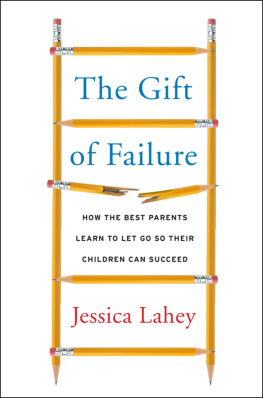Table of Contents
HowParents Can Help Their Children Get Organized
and Learn to Be Productive
The first day of school is a universal time of change forall parents of school-age children. And though much has suddenly changed inour childrens lives, much has stayed the same in some: disorganized bedrooms,poor time management, lack of discipline, and stress. As parents, its easy toget caught up in the hustle and bustle of settling our children into the newschool year and making sure theyre comfortable that we forget about theongoing struggles our children endure the rest of the year.
According to John Stamm, Ph.D., and Bill Stockton (PsychSavvy: Children andOrganizational Skills), School failure andunhappiness in the school setting can be often traced to poor organizationalskills. Evidence shows that children having trouble dramatically improvedtheir school performance because of assistance in becoming better organized. There are several important areas where you can help your children get organizedand keep their home and school lives running smoothly, setting them up forsuccess later in life:
1. Handling transitions
My boys Johnny and James are six and five years old,respectively. Since the time they were young, Ive encouraged them to be self-sufficientand help daddy or help mommy get themselves dressed, wash themselves, puttheir dirty clothes in the hamper, and so on. Now that theyre able to put ontheir pajamas at night and brush their own teeth, I can get other things donewhile theyre busy, and then we can all spend more rest or play time together.
Transitions are the most difficult times of the day forthem: from nighttime to morning time; from workday to evening; and from eveningto bedtime. These transition periods are called witching hours, and they arefraught with stress and chaos. Every person, every household, has a witchinghour (sometimes more). Even though transition times are only a small portion ofthe day, they can pack enough punch to spill over into the rest of it. However, with proper planning, you can flow through these high-stress periodsmore easily.
From workday to evening. We have affectionatelydubbed ours the 5:00 melt-down hour. Weve been working hard all day. Thekids have been stimulated at school. When we pick them up, they have a millionthings to talk about. Dinner needs to be made and the table set. The kids startto fight. Meagan talks to me a mile-a-minute, as ten-year-old girls do. I can feelmy blood pressure rising. Before long, Im short-tempered and hungry. My earsare ringing from the sudden rise in decibels. Will you kids just be quiet? Ishout, which makes things worse. Sensing my stress, James starts teasingJohnny, and Johnny begins whining, to which John responds by sending everyoneto his or her room. What a great way for the night to begin!
Rest assured that this is the normal scenario in householdsacross Americayes, even in The Productivity Pros housetrust me. But you canplan for this witching hour and do something about it once you know what thepatterns are.
Because John is the chef in our family and is busy cookingdinner at our witching hour, it makes sense for me to pick up the boys fromdaycare. With Meagan having returned on the school bus, it also makes sense forher to drive with me and download her day so she isnt competing for attentionwith the boys at home. Since theyre hungry and cranky when they get home, itmakes sense to pick them up at 5:00 instead of 4:45 so they can eat a snackwith the class. Once we get home, Meagan sets the table and helps John while Itake the boys to another part of the house, connect with them, and keep themoccupied. Once John rings the dinner bell and we sit down to eat, our entirehousehold mellows out.
From evening to bedtime. Perhaps bedtime is yourbattle, trying to do baths, brush teeth, read books, and get everyone ready forthe morning. When it comes to bedtime, a consistent routine is the best way forkids to transition from awake to asleep. Dont wait until they say theyresleepyit may be too late! Start their bedtime routine at the same time eachnight, and use a checklist to remind and guide them through the process. Setaside at least 30 minutes every night so you dont have to rush. Even beforeyour kids can read, you can use a checklist using pictures and stickers. Ourkids each have two checklists of activities they must completeone for themorning and one for the evening. We simply have to say, Do your checklist,and most of the time (many times with encouragement and reminders like whereare you on your checklist?) things get done without repeating the message tenmillion timesand getting frustrated doing so.
You can even put timed deadlines on each one activity sothey know where they should be in the one hour of time designated to get outthe door. At first, give rewards for making the deadlines. After a while, startto use penalties: e.g., miss more than two deadlines and you lose yourtelevision time.
Here is a sample checklist to get you started and modify tomeet your needs. This list was created when my daughter was in first grade(obviously, they change as the child gets older, although some older childrenstill need reminders to flush!).
If youd like to have electronic copies of these checklists,visit www.TheProductivityPro.com and look for Free Stuff under the Resources menu.
Checklist for getting ready atnight
Check or sticker | Item |
Do 40 minutes of reading |
Do homework |
Give notes to Mom from backpack |
Set and clear table |
Check on bunny |
Eat snack |
Brush teeth |
Check Emmas water and food bowls |
Go potty |
Flush potty |
Take shower (every other day) |
Wash face |
Brush hair |
Get pajamas on |
Feed fish |
Make sack lunch if needed for tomorrow |
Make sure room is clean |
Get bed ready |
Put on lotion |
Turn out light |
Pray |
Kiss parents goodnight |
When your children get to bed easily, maybe, you wont feeltoo rattled to relax. You might even think about tackling the mountain of billsand filing youve been putting off.
From nighttime to morning. Perhaps your witching houris first thing in the morning, trying to get everyone out the door. AssumingIve set myself up for a great day (see #5), I want to get my morning off to agreat start. If I have scheduled to be in my office all day, my morning goessomething like this: get myself ready first so Im not shouting directions andmoderating disagreements from inside my bedroom; toss the comforter on the bed;focus on the kids, making sure Meagan is up and get the boys dressed for school(John usually drives them to daycare in plenty of time to participate in theschool breakfasthealthy, faster, and cheaper); have my breakfast and coffee;take a few steps around the house and tidy up; toss in a load of laundry ifsomething cant wait until the weekend; put my husbands stray papers into thenewspaper bin (a subject of another conversation); unload the dishwasher. ThenIm ready to begin my day!
As for my children getting themselves ready, here is asample checklist we created for Meagan that can be a model for you.
Checklist for getting ready inthe morning















